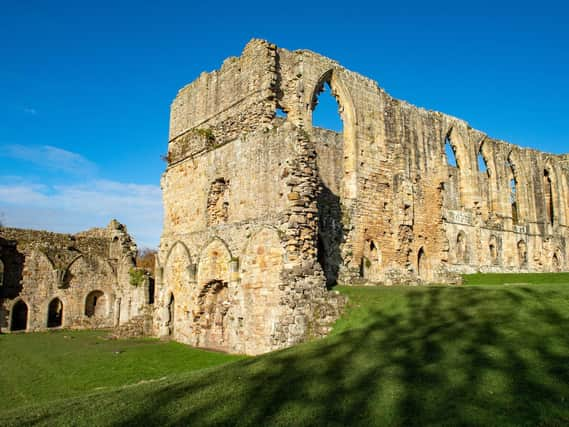Why Easby Abbey has wowed visitors and artists like Turner for centuries


English Heritage describes this ecclesiastical treasure as one of the best preserved monasteries of the 12th century Premonstratensian order, known as the White Canons because of the colour of their habits.
It certainly has a long and venerable story. The abbey, which has stood since the 12th century, may now be in ruins but modern visitors can still see the refectory, gatehouse and canons’ dormitory, while the parish church within the precinct is still in use and contains rare 13th century wall paintings.
Advertisement
Hide AdAdvertisement
Hide AdThe abbey was founded in about 1152 by Roald, constable of Richmond, and later enjoyed the patronage of the Scrope family.
Most of its buildings were stripped and demolished after the abbey was dissolved by Henry VIII as part of the reformation in 1536, but such is its enduring beauty that it became something of a fabled landmark.
George Byng, Viscount Torrington, wrote that “there cannot be a more perfect ruin (or) a nicer ruin … or one of happier situation.”
In 1700, Sir Scrope Howe sold it to Bartholomew Burton. It passed through several different hands in the 18th century, before being bought by Robert Jaques in 1816.
Advertisement
Hide AdAdvertisement
Hide AdDuring the 19th century the ruins became a favourite subject for Romantic artists, including J M W Turner who made repeated visits between 1816–18.
Historical and religious interest in the ruins continued and in 1885 the abbey was partly excavated by Sir William St John Hope for the Society of Antiquaries.
The Jaques family continued to own the abbey ruins until 1930, when they were taken into guardianship by the Ministry of Works.
Today, the grandeur of the surviving buildings testifies to the success and wealth of the abbey, which sits close to the River Swale.
And to visit there all these years later is to almost walk through history and to be beguiled as Turner and others once were.
Technical details: Nikon D4 24mm lens 1/1000 sec ISO 400 f7.1
Comment Guidelines
National World encourages reader discussion on our stories. User feedback, insights and back-and-forth exchanges add a rich layer of context to reporting. Please review our Community Guidelines before commenting.